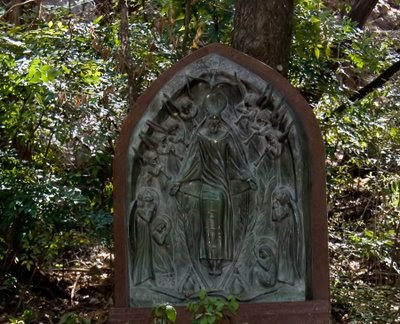I don't have any criticism of a low-impact lifestyle. I am pretty low impact myself, but it's a function of being Low-Income Man, plus maybe some remote Scottish stinginess inherited from my forebears, operating scarcely diminished at a remove of 300 years.
It seems to me very American of us to make saving the planet into a personal and moral quest, like NIM does. America, in our minds, should still be a City on a Hill, a new Jerusalem (never mind that the reality of America, from the beginnings till now, ought to disabuse us of such notions.) And if we are gonna be worthy of being among the elect, we must be strenuous in the pursuit of personal goodness. Who can object to that? I certainly don't. I like good people, and the low-impact crusaders are good people, by and large. As an old hippie, I have personal memories of earlier such children's crusades. I was a part of them. I still cherish the worldview we had. I am not cynical about the motives of the children. They may have been the finest children in the world.
The problem is that it won't save the planet.
The tragedy of the commons works on all scales, from an individual to an international level. Personally and locally, if I use less gasoline, it increases the supply, and lowers the price to Hummer owners, who drive more. Internationally, if the US as a nation decreases gasoline consumption, it increases gasoline availability for others, which leads to a decrease in the price of gasoline in, say, China, where in response they build more cars and highways, and drive more.
Likewise, Jevons's paradox is a related problem. William Stanley Jevons first noticed that the increased efficiency of Watt's steam engine over the earlier Newcomen engine led to more coal being burned, not less. It's intuitively obvious to us why this is so, but it was a puzzle to economists. Increased fuel efficiency of cars will not, of itself, lead to less gasoline being consumed, but will very possibly have the opposite result.
The only way to get circumvent these two tendencies is through governmental action (gas taxes, rationing, etc.) and, on a larger scale, international treaties. This requires a sense of emergency, like everyone had in world war II. We do not yet have such a sense of emergency. But, because the problem is genuine, we will presumably realize the emergency exists at some point, and be willing to act. The question is, of course, will it be too late. I wish I knew the answer.
(I was going to put in a coda that came out basically sounding like "in the meantime, to thine own self be true." But one of the reasons I have cut back on political blogging is the Polonius quality it had--to my mind at least. I laughed the other day when I read, in James Wolcott I think, a quote from someone else to the effect that what we really love about Hamlet is that Polonius gets stabbed. So, in the spirit of Nansen, I will now try to kill off Polonius for a few days again.)
Addendum: In the original version of this post, I had overlooked a certain grandiosity of NIM's blogname, and mistakenly referred to the blog's author as Low Impact Man. Sorry for the carelessness.
Arbitrary Zen photo














